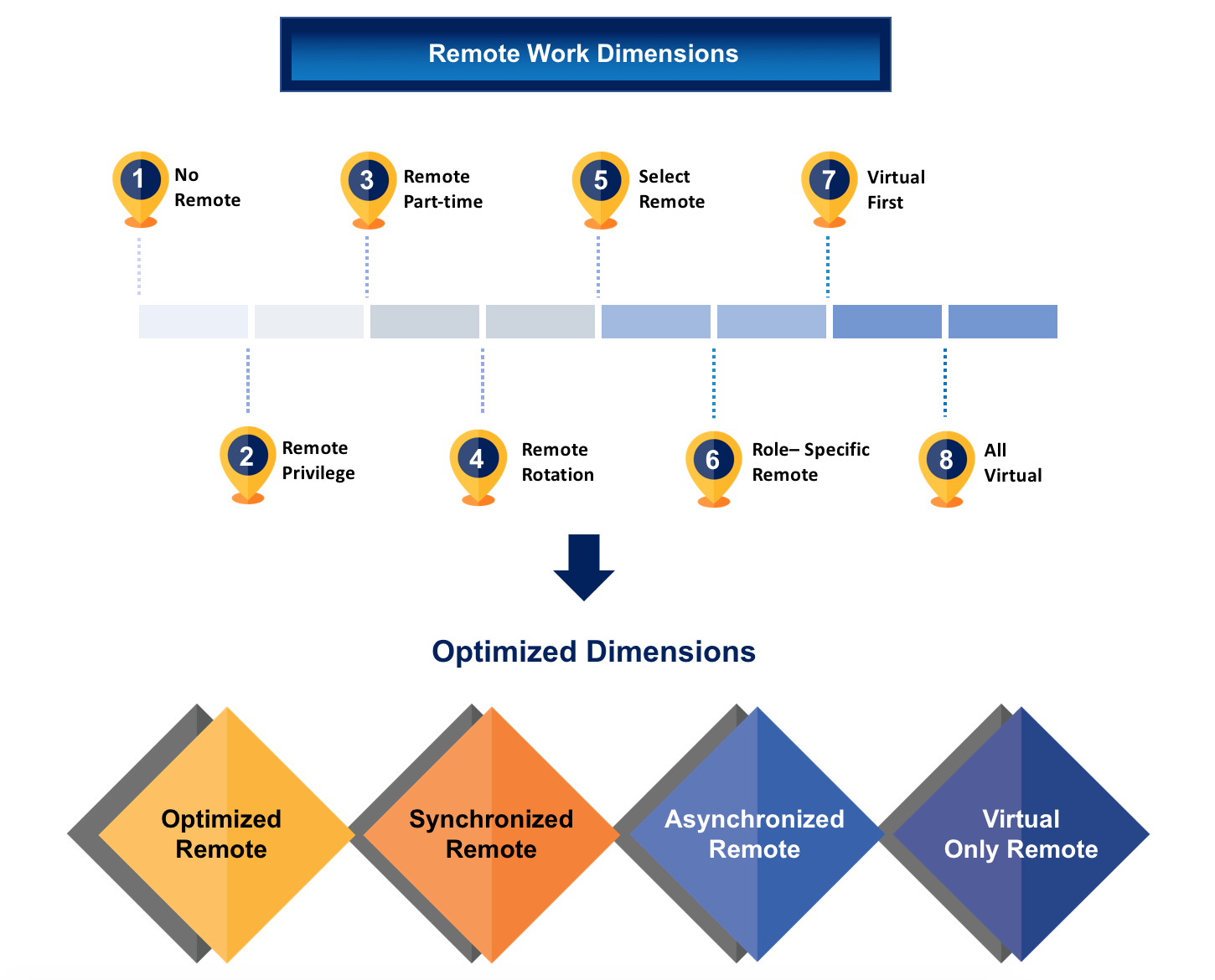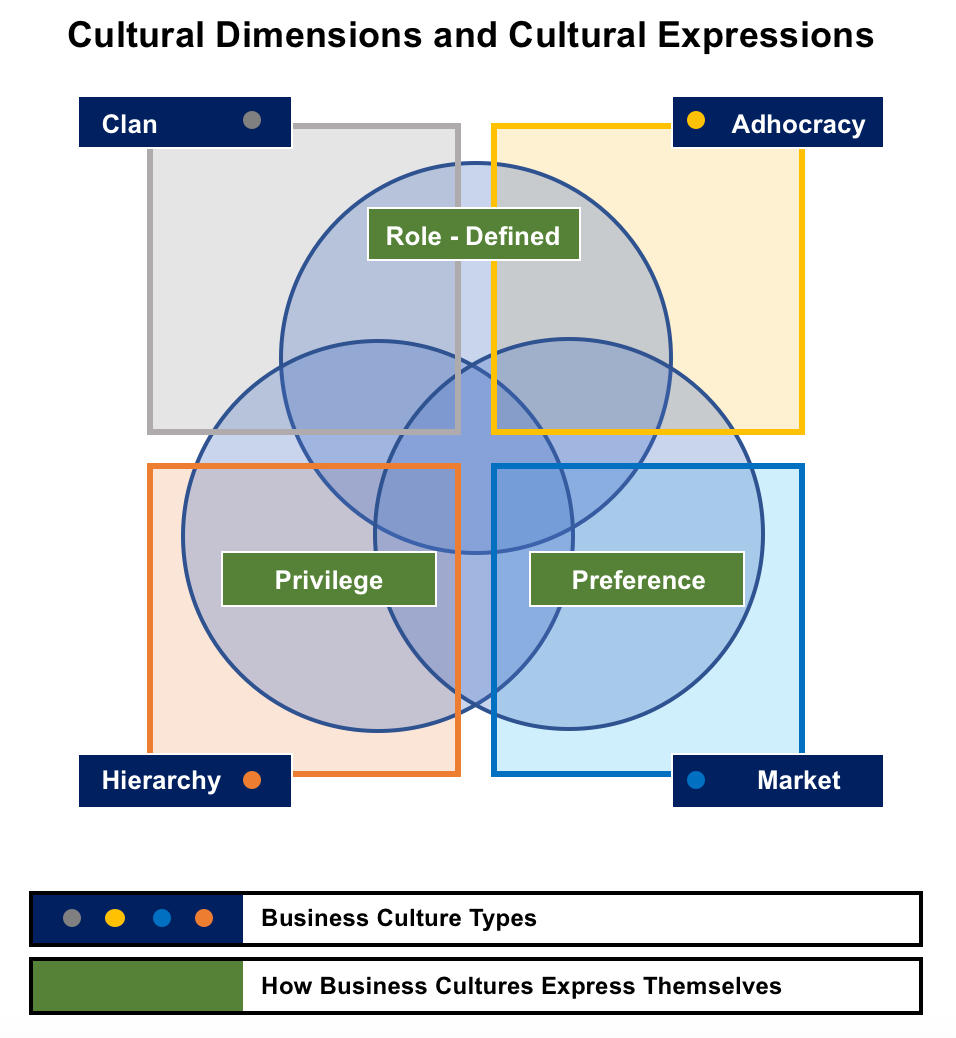This article was originally published on Stacey Litwin-Davies' LinkedIn.
"Hybrid" has become the hot new buzzword in the wake of the pandemic, but there remains some confusion over its definition, as not all hybrid work policies are made the same.
After more than a year and a half of working remotely, 73% of employees globally, and 66% of Canadian workers want a more flexible work arrangement.
“Often approached as a binary, all-or-nothing proposition, hybrid work can actually mean a lot of different things, and there is a range of strategies for providing employees with the flexibility they demand. In this period of rapid change its important for business leaders to understand that they don’t need to transition to a fully remote workforce, or completely transform the business to offer as much flexibility as possible, in order to meet this demand,” explains Stacey Litwin-Davies, Cresa’s Principal of Consulting.
The reality is that not every organization, or even every individual team, has the same in-person work needs, the same work culture, or the same individual preferences. Unfortunately, the talk around hybrid work has created undue pressure on business leaders, leaving many with the impression that there is only one approach; and one that doesn’t necessarily make sense for their business.
To help organizations understand the wide range of hybrid work formats that exist, and find the policy that’s right from them, we at Cresa have prepared the following infographics; one outlining various points along this hybrid work spectrum, and the other to help them determine which policy best suits their unique culture.


The Venn diagram is designed to help organizations better define their internal culture in order to find their place along the hybrid work spectrum. The four business culture types we’ve identified— clan, adhocracy, privilege, and preference — typically express themselves through three leadership structures, namely role-defined, privilege and preference. Once you’ve identified your culture and leadership structure, you can better determine the most natural place for your organization to land along the 8-point hybrid spectrum, which ranges from entirely in-person to entirely remote.
“Leaders today can’t afford to delay in choosing a hybrid policy that works for them, but they also shouldn’t feel pressured to choose a policy that doesn’t fit their business’s needs, either. In fact, many organizations will find that certain points along the hybrid work spectrum make sense for some of their teams, and not others,” states Jamie Grossman, Managing Principal of Cresa’s Toronto office.
That is why it’s important to collaborate with both company leaders and team leaders to devise a hybrid work policy that maximizes the benefits while minimizing the risks. No one point in the spectrum is inherently better or worse than any others; they are simply a range of options. It is up to the organization to find the policy that best suits their needs.
This self-diagnosis process will require organizations to take a hard look at their company culture, the unique makeup of their teams, the preferences of their staff, their leadership style, and any other elements that might influence this important decision. Crafting a policy with those considerations in mind will go a long way in securing buy-in from leaders and staff members, and create a more natural fit for your new hybrid work policies.
Similarly, once you begin putting your policy into practice, it’s important to remain flexible and to communicate to your team when policies are being crafted on a trial basis. Once you begin down this road, you might discover a different point on the spectrum that is more realistic, or more in line with your employees’ preferences, and that’s okay. Engaging in this practice of self-assessment will allow your organization to remain nimble, and continue optimizing your hybrid work strategy moving forward.
Choosing to pursue a more hybrid work arrangement is an important first step. Once you decide to move in this direction, it’s important to take the necessary time to consider the range of available options and find the one that best suits your unique situation. We at Cresa can help you better define that vision, and help you make it a reality. Find out more at www.cresatoronto.com.
"Hybrid" has become the hot new buzzword in the wake of the pandemic, but there remains some confusion over its definition, as not all hybrid work policies are made the same.
After more than a year and a half of working remotely, 73% of employees globally, and 66% of Canadian workers want a more flexible work arrangement.
“Often approached as a binary, all-or-nothing proposition, hybrid work can actually mean a lot of different things, and there is a range of strategies for providing employees with the flexibility they demand. In this period of rapid change its important for business leaders to understand that they don’t need to transition to a fully remote workforce, or completely transform the business to offer as much flexibility as possible, in order to meet this demand,” explains Stacey Litwin-Davies, Cresa’s Principal of Consulting.
The reality is that not every organization, or even every individual team, has the same in-person work needs, the same work culture, or the same individual preferences. Unfortunately, the talk around hybrid work has created undue pressure on business leaders, leaving many with the impression that there is only one approach; and one that doesn’t necessarily make sense for their business.
To help organizations understand the wide range of hybrid work formats that exist, and find the policy that’s right from them, we at Cresa have prepared the following infographics; one outlining various points along this hybrid work spectrum, and the other to help them determine which policy best suits their unique culture.


The Venn diagram is designed to help organizations better define their internal culture in order to find their place along the hybrid work spectrum. The four business culture types we’ve identified— clan, adhocracy, privilege, and preference — typically express themselves through three leadership structures, namely role-defined, privilege and preference. Once you’ve identified your culture and leadership structure, you can better determine the most natural place for your organization to land along the 8-point hybrid spectrum, which ranges from entirely in-person to entirely remote.
“Leaders today can’t afford to delay in choosing a hybrid policy that works for them, but they also shouldn’t feel pressured to choose a policy that doesn’t fit their business’s needs, either. In fact, many organizations will find that certain points along the hybrid work spectrum make sense for some of their teams, and not others,” states Jamie Grossman, Managing Principal of Cresa’s Toronto office.
That is why it’s important to collaborate with both company leaders and team leaders to devise a hybrid work policy that maximizes the benefits while minimizing the risks. No one point in the spectrum is inherently better or worse than any others; they are simply a range of options. It is up to the organization to find the policy that best suits their needs.
This self-diagnosis process will require organizations to take a hard look at their company culture, the unique makeup of their teams, the preferences of their staff, their leadership style, and any other elements that might influence this important decision. Crafting a policy with those considerations in mind will go a long way in securing buy-in from leaders and staff members, and create a more natural fit for your new hybrid work policies.
Similarly, once you begin putting your policy into practice, it’s important to remain flexible and to communicate to your team when policies are being crafted on a trial basis. Once you begin down this road, you might discover a different point on the spectrum that is more realistic, or more in line with your employees’ preferences, and that’s okay. Engaging in this practice of self-assessment will allow your organization to remain nimble, and continue optimizing your hybrid work strategy moving forward.
Choosing to pursue a more hybrid work arrangement is an important first step. Once you decide to move in this direction, it’s important to take the necessary time to consider the range of available options and find the one that best suits your unique situation. We at Cresa can help you better define that vision, and help you make it a reality. Find out more at www.cresatoronto.com.



